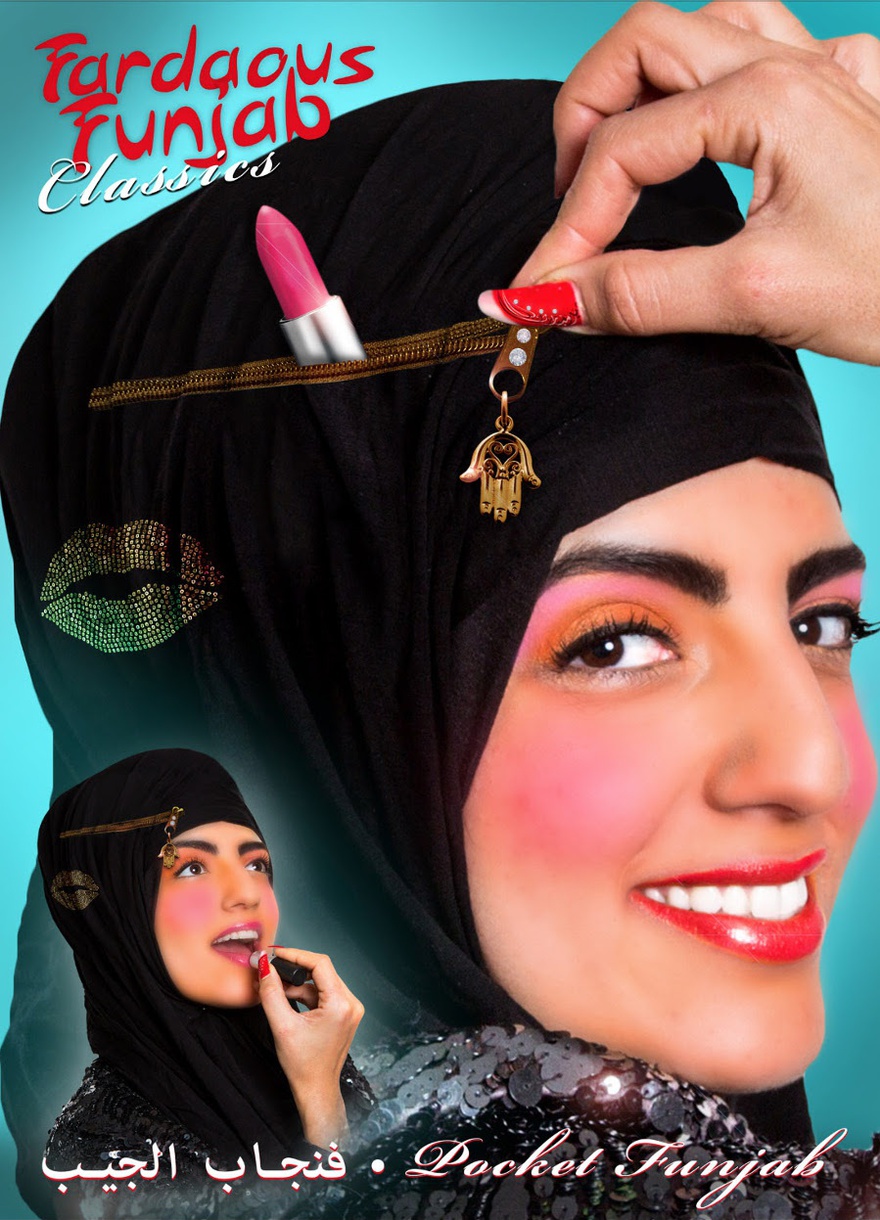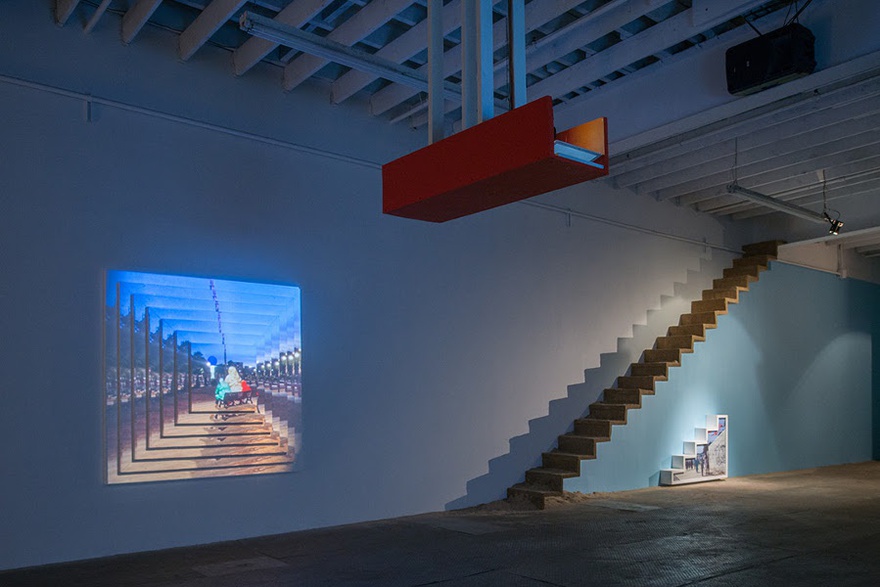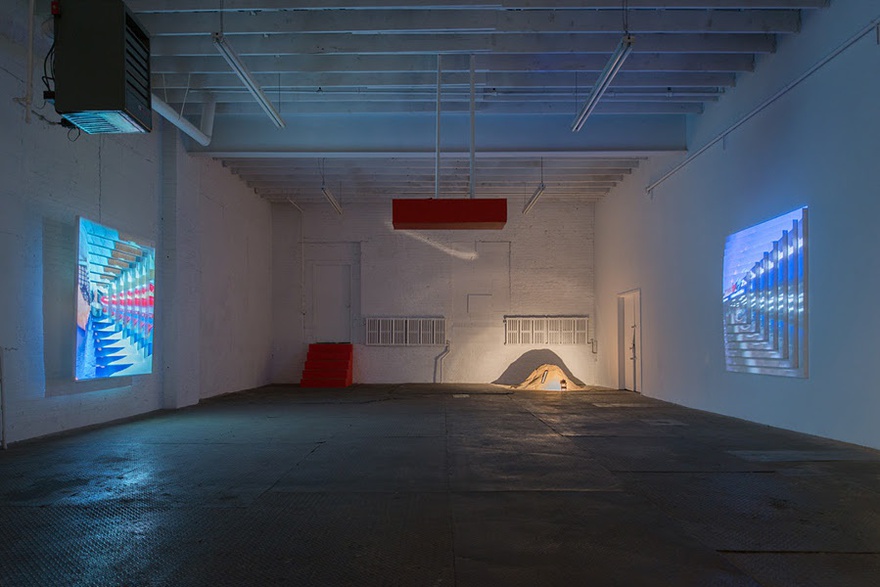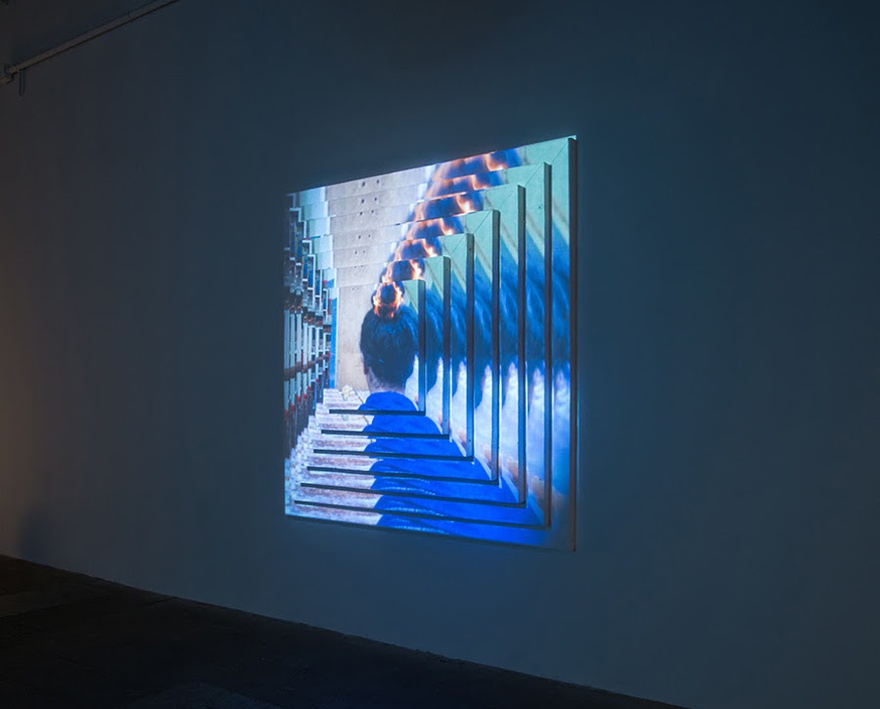Interviews
Laughing Out Loud
Meriem Bennani in conversation with Myriam Ben Salah

Myriam Ben Salah: Your polymorphous practice seems to overcome forms, contexts and spaces, opening up new artistic models and cross-disciplinary languages. From sculpture to video, by way of fashion, social media, digital experiments or animation, you play on idioms that we know while creating something new, flirting with the absurdist. How would you define yourself?
Meriem Bennani: Thank you for saying the diversity somehow comes together into a cohesive language! For a while I was worried about the validity of some of my projects in terms of their value as art, especially very romantic conceptions of art. I think that this is also related to having lived in France where it felt harder to combine art with some more commercial endeavours. Living in the USA has been productive in that I don't think about these issues in the same way anymore. Or perhaps it is that noticing the common threads in my work has helped me reconcile my practices and worry less about a formal cohesion. Those common threads are things like humour and using my travelling back and forth between New York and Morocco as an energizing cyclical movement that is generative of ideas and images that never stagnate. I think this movement is crucial in making work that is internally set up for renewal and touches both ends of the bicultural landscape it is being produced by and within.
MBS: How did you develop these different disciplines?
MB: I really think they have developed from loving learning about technical things. I have an emotional approach to techniques and technology that somehow feels completely in line with a Moroccan love for storytelling. I feel attached to the narrative potential of post-production. It's like getting to tell your version of the story. I am genuinely excited every time I discover what comes out of the distasteful hybrid of casual phone footage and middle or high production value effects. At this point I no longer really know where the technical aspect stops and the conceptual narrative starts. To trace things back a little bit, my practice has developed from drawing - that was my main practice for a while and I know I will come back to it. I went to a school for animation at l'Ecole Nationale Supérieure des Arts Décoratifs (l'ENSAD) in Paris, where I learnt a lot of traditional animation techniques. I've always loved computers and hate to ask for help so I learnt programmes that allowed me to freelance in post-production and I started using things I taught myself for jobs and on my own videos.
MBS: Although you don't work within what we call 'performance art' sensu stricto, your practice involves quite a lot of performativity. I am thinking about your Internet series Fardaous Funjab (2015) for instance, a hilarious spoof of a reality show about a fictitious hijab designer played by your mother. Could you tell me more about the genesis of the project?
MB: It started two summers ago when I decided to watch season one of Keeping up with the Kardashians, before Netflix took it down. The language of the first season is so transparent and basic in terms of understanding the mechanics of reality television that it felt didactic, like a tutorial. I was in Morocco for a while and thought of using what I had learnt to make my own reality show at my house. I think some houses in Morocco, my family's included, feel very Californian! At that time I had started making Photoshop images of impossible hijabs using images found on the Internet – a birthday cake on top of a hijab, a Halloween hijab, and so on. So I thought I would combine both of these ideas and make the reality television show about a designer who makes these head pieces.
I quickly came up with the main characters of the show: Fardaous, the designer, and Hounayda, her sister and assistant. I had multiple ideas of hijabs and thought they could each be starting points for episodes, which is actually changing now as I am re-writing most of the show. I would write very loose scripts and present them as a set of rules to my 'actors': in this scene you meet this important client, this is what you care about in this moment, make sure you say the word 'cleavage' at some point and so on. Then I would follow the scene with one camera and let my mother and aunt and whoever else is in the scene improvise, because the phrasings and natural drama that would come from stepping back was better than I could have ever written.
MBS: I think that there is something interesting about your relationship to your culture that transpires through Fardaous Funjab: you have the distance and humour of someone that has assimilated all the codes of a specific region (Morocco, but more generally North Africa) but who also has a certain distance to be able to deal with them playfully. For a long time, artists from the Arab world were associated with narratives of struggle and a rhetoric of the past, somehow linking authenticity with traumatic back-stories and dramatic storytelling. You place humour and irony at the centre of your practice and at the centre of your relationship with your culture. How do you deal with these questions of exoticism and Western fantasies? Do you take them into account?
MB: I really do. Morocco is politically stable and has experienced a very mild 'Arab Spring'. Our history is not so much pigeonholed as one of struggle and conflict but is extremely exoticized as a dream vacation destination. I decided to embrace that and have a positive response to the enthusiasm it creates – when it is a thoughtful and open-minded enthusiasm, of course. I feel that that spontaneous reaction will always keep me away from toning down my culture or exoticizing my circumstances, which are the two risks at stake. What I was saying earlier about humour, constant movement, and refusing nostalgia is directly related to these issues. The reason why I care about this idea of preserving a sense of spontaneity as much as possible is that there are too many opportunities for self-consciousness and awareness: I could be exoticized in America, I could – and have – been Westernized in Morocco. There is a level of caution that can be detrimental if the works become a direct response to these issues. Being in between cultures is a crucial part of my work but I do not want it to define the entire trajectory of my practice.
MBS: The world that you describe in Fardaous Funjab is very familiar to a girl who grew up in a North African privileged environment: fancy suburban houses, swimming pools, fussy living rooms, closed environments and indoor social interactions. It is quite marked socially. But I was also wondering if it was gender related? I'm not sure if a male artist would have had those insights. Do you feel your practice sometimes shifts towards gender issues?
MB: The world described in Fardaous Funjab is definitely a take on a very specific Moroccan lifestyle. The sharpest teeth of the show's criticism bite right through some aspects of the Moroccan bourgeoisie that I have grown up watching. I think a male artist could have had those insights as well. If I was a boy growing up in the same environment, I would have had a similar access to the world that inspiredFardaous Funjab. The crucial difference is that there is a large part of city life that I wouldn't have had access to as a woman. But at this point this idea of a teenagehood roaming the streets, playing football and playing knock and run on neighbours' doors might be a complete fantasy anyway.
MBS: Is Fardaous Funjab mostly about criticism or also some sort of tenderness?
MB: There is a lot of criticism but none of it is directed towards religion. This is the amalgam that has been made and that I fiercely want to stay away from. I am not interested in talking about Islam. I am interested in the evolution of the hijab into a fashion accessory and an incredibly significant indicator in understanding the relationship of the body, sex and individualism in a modern Muslim society. There is a real paradox between the homogenizing, body-hiding hijab and the flamboyant objects you see on 'hijabista' blogs. My tenderness goes to the feminist gesture that I see in this reappropriation of the body and self-expression while allowing the hijab to be creative and fun. My criticism, which surprised me at first, has mostly gone into the vanity and flamboyance of the character of Fardaous. It's a very straightforward criticism, very Molière. It is also self-critical because this same flamboyance is the product of my imagination as much as it is an observation of the environment I grew up in.
MBS: Have you shown it in Morocco?
MB: No, never.
MBS: Would you ever show it there? How do you think it would be perceived?
MB: I would love to. I think there could be a wide range of reactions in Morocco, which would probably provide very interesting and challenging feedback. So far I haven't had the opportunity to really be confronted about the project because it isn't received as completely controversial in my immediate New York surroundings. Recently, I got a strange taste of what such reactions to the show could be like in Morocco. A Moroccan website (which has as many readers as misinformed facts) posted an article about Fardaous Funjab and mentioned that I was showing it at the Museum of Judaism. Once the article came out, they posted a link to it on their Facebook page and many people commented on the link. None of the people, the writer included, had actually seen an episode of the show, since it is not on the Internet and can only be seen at dedicated screenings or on a private Vimeo link. However, the comments were crazy and my recent affiliation to the Jewish Museum turned into a convenient detail to demonize me.
From the comments I read I could tell that some people had just jumped to the conclusion that I was making fun of the hijab and religion with the project, and was therefore naturally showing it at the Museum of Judaism. Hearing about the project or seeing just one image of it can often lead to dangerous equations if paired selectively: hijab plus humour equals mocking religion. For this reason I think that the ideal way to show Fardaous Funjab in Morocco would be at an organized screening that has an introduction and question and answer session after the show. I don't mean to be patronizing by saying that this is an audience that would need assistance in fully understanding the work, rather I just care so much about sharing it in Morocco that I would want people to watch it with as much openness as possible. I think that the social and aesthetic commentary going on in the show and the language jokes would make a Moroccan laugh more than anyone else. If their reactions were fiery after watching Fardaous Funjab it would be great and I would love to hear the debates that could emerge from it.
MBS: For your last show Gradual Kingdom at Signal Gallery in Brooklyn (13 November–20 December 2015) you displayed quite a different body of work that ranged from sculpture to video installations, but still related to Morocco. What were the issues at stake?
MB: To come back to your question about making work from the fussy confines of living rooms earlier, Gradual Kingdom does the opposite and has a lot to do with going out and looking at the public space. The central question of the show is: what does it mean to say that a country is 'developing'? If it is in the process of being developed, when does it stop, and when does it arrive? Does it mean it has to work harder than an already developed country? How do work and leisure coexist? How do imported ideas of modern living fit into the reality of everyday life as documented by the iPhone footage of the centre video piece? The show also uses sand, the main material for the necessary construction in Morocco's development as well as a being a symbol of leisure and tourism. It was also exciting as an Arab to work with a material that has been abused linguistically as a negative trope over the ages and claim it back with contemporary issues in mind. The many displays of the show, including pyramidal screens for mapped videos, holocubes, and fake iPhone screen sculptures, channel the country's extreme self-consciousness and impeccable branding as the most desirable touristic destination in the Arab world, both authentic and progressive.
MBS: Does living in New York allow you greater power in terms of transgression and controversy or do you think you would produce the same work in Morocco?
MB: I don't think so much in those terms, or at least I do not have a desire for transgression and controversy as a departure point for work. Although I live in New York I make work that will be seen in Morocco as much at is it here since most of it is seen online anyway, whether it is a digital piece or documentation of a physical installation. However, I would say that my sense of what is controversial or where transgression starts is certainly blurred in between cultures.
MBS: You are very active on social media, especially on Instagram. You often stage yourself in quite unusual situations. Do you think social media is the new place for performance art? How do you consider your incursions within the infinite stream of images?
MB: These situations are all real things that have happened to me. I think as much as social media can be an incredible platform for many things, it is limited to video and audio, which is reductive for performance art. As an artist who works mostly behind the computer I find that the most exciting thing about seeing a performance is the stress or discomfort it generates – there is so much adrenaline. I always feel nervous for the performers and for myself somehow, and none of that happens online. I do love Instagram and feel grateful for the connections and visibility it allows. I have met so many people through it, too. To me it is like an open notebook that gives me instant feedback on ideas that come to mind and that could become a bigger project. I take it seriously on an emotional level but make sure not to give the social media feedback too much authority in my decision-making.
View Meriem Bennani's project RAM-COM, produced for Ibraaz, by following this link.




